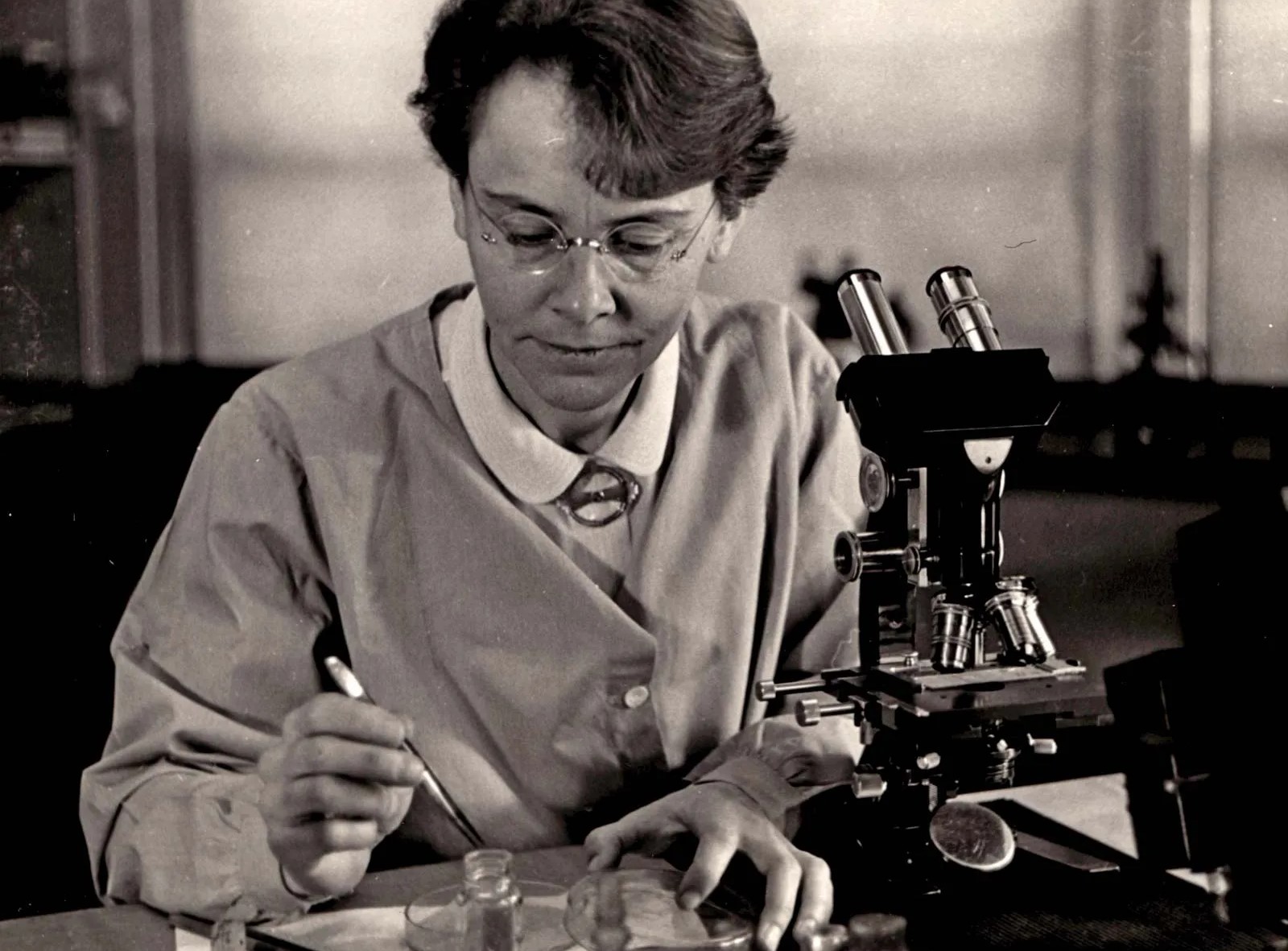
Barbara McClintock, a pioneering American scientist, left an indelible mark on the field of genetics. Her groundbreaking research and revolutionary discoveries continue to shape our understanding of plant genetics to this day. McClintock’s career spanned over five decades, during which she made significant contributions to the study of maize chromosomes and the role of transposable elements in gene regulation.
In this article, we will delve into the intriguing life and accomplishments of Barbara McClintock. From her early passion for science to her remarkable discoveries, we will uncover 10 fascinating facts about this remarkable woman. Join us on this journey as we explore the life of Barbara McClintock and her lasting impact on the world of genetics.
Key Takeaways:
- Barbara McClintock was a pioneering geneticist who discovered “jumping genes” in maize, challenging scientific beliefs. Her work laid the foundation for modern genetics and continues to inspire curiosity and persistence in scientific research.
- Despite facing skepticism, Barbara McClintock’s groundbreaking discoveries revolutionized genetic understanding and earned her the Nobel Prize. Her work remains influential today, showcasing the importance of pushing the boundaries of knowledge.
Barbara McClintock was a renowned American geneticist.
Barbara McClintock, born on June 16, 1902, in Hartford, Connecticut, was a pioneer in the field of genetics. She made significant contributions to the understanding of how genes are regulated and demonstrated the existence of genetic transposition.
McClintock’s groundbreaking work focused on maize.
Throughout her career, Barbara McClintock studied and conducted research on maize, also known as corn. Through her experiments, she discovered that genes could move within and between chromosomes, challenging the prevailing belief of gene immobility.
She was awarded the Nobel Prize in Physiology or Medicine.
In 1983, Barbara McClintock became the first and only woman to receive the Nobel Prize in Physiology or Medicine solely for her work in the field of genetics. Her groundbreaking discoveries revolutionized the understanding of genetic mechanisms.
McClintock faced initial skepticism from the scientific community.
Despite the significance of her findings, Barbara McClintock’s work was met with skepticism and disbelief. It took several years for her discoveries to gain recognition and acceptance within the scientific community.
She developed the concept of “jumping genes”.
One of Barbara McClintock’s major contributions was the discovery of transposable elements, which she referred to as “jumping genes.” These elements have the ability to move within the genome, potentially influencing genetic traits and even causing mutations.
McClintock’s research laid the foundation for modern genetics.
Barbara McClintock’s pioneering research paved the way for future generations of geneticists. Her work on transposable elements and gene regulation has greatly advanced our understanding of genetic mechanisms and their role in development and evolution.
She was a member of the National Academy of Sciences.
Barbara McClintock was elected as a member of the prestigious National Academy of Sciences in This honor recognized her exemplary contributions to the field of genetics and her significant impact on scientific knowledge.
McClintock received numerous other awards and honors.
In addition to the Nobel Prize, Barbara McClintock received numerous other awards and honors throughout her career. These include the Thomas Hunt Morgan Medal, the Albert Lasker Award, and the National Medal of Science.
McClintock continued her research even after retirement.
Even after retiring from her position at Cold Spring Harbor Laboratory, Barbara McClintock remained active in research. She continued to contribute to the field of genetics and mentor younger scientists with her invaluable knowledge and experience.
Her work remains influential and relevant today.
Barbara McClintock’s groundbreaking discoveries and contributions to the field of genetics continue to have a profound impact on scientific research. Her work serves as a testament to the importance of curiosity, persistence, and pushing the boundaries of knowledge.
Conclusion
Barbara McClintock was a remarkable scientist whose work revolutionized the field of genetics. Her groundbreaking discoveries on genetic transposition and the role of transposable elements earned her numerous accolades, including the Nobel Prize in Physiology or Medicine in 1983. McClintock’s persistence and passion for her research allowed her to challenge existing beliefs and pave the way for future generations of scientists to delve deeper into the mysteries of genetics.
Through her studies on maize, McClintock uncovered the complex nature of gene regulation and revealed the incredible adaptability of organisms to their environment. Her work not only expanded our understanding of genetic inheritance but also raised important questions about the dynamic nature of the genome.
Barbara McClintock’s legacy continues to inspire scientists and researchers today. Her dedication, curiosity, and willingness to challenge conventional wisdom exemplify the spirit of scientific inquiry. McClintock’s contributions to the field of genetics serve as a reminder of the invaluable role women have played in shaping the scientific landscape throughout history.
FAQs
1. Who is Barbara McClintock?
Barbara McClintock was a renowned American scientist and cytogeneticist, best known for her groundbreaking discoveries in the field of genetics.
2. What were Barbara McClintock’s main contributions to genetics?
McClintock’s major contributions include her discovery of genetic transposition and the role of transposable elements in gene regulation.
3. What is genetic transposition?
Genetic transposition refers to the movement of genetic elements, known as transposons or “jumping genes,” within an organism’s genome.
4. How did Barbara McClintock’s discoveries impact the field of genetics?
McClintock’s work challenged the existing model of static genes and revolutionized our understanding of the dynamic nature of the genome and gene regulation.
5. What recognition did Barbara McClintock receive for her contributions?
Barbara McClintock received numerous awards for her achievements, including the Nobel Prize in Physiology or Medicine in 1983.
6. How did Barbara McClintock’s research on maize contribute to genetics?
McClintock’s research on maize provided significant insights into the mechanisms of gene regulation and the adaptability of organisms to their environment.
7. Is Barbara McClintock still influential in the field of genetics today?
Absolutely! Barbara McClintock’s work continues to inspire and influence geneticists and scientists around the world.
8. How did McClintock’s work challenge prevailing beliefs in genetics?
McClintock’s discoveries challenged the notion of genes as fixed entities by demonstrating their ability to move and regulate gene expression.
9. What is the significance of transposable elements?
Transposable elements play a critical role in the evolution of organisms and contribute to genetic diversity within species.
10. What lessons can we learn from Barbara McClintock’s life and work?
Barbara McClintock’s dedication, persistence, and passion for her research serve as an inspiration to pursue scientific inquiry, challenge conventional wisdom, and push the boundaries of knowledge.
Inspired by McClintock's groundbreaking contributions to genetics? Continue exploring her fascinating life and legacy with 19 more intriguing facts that delve deeper into her scientific achievements, personal challenges, and lasting impact on the field of genetics. From her early years to her later recognition, there's still much to learn about this remarkable scientist who changed our understanding of how genes work.
Was this page helpful?
Our commitment to delivering trustworthy and engaging content is at the heart of what we do. Each fact on our site is contributed by real users like you, bringing a wealth of diverse insights and information. To ensure the highest standards of accuracy and reliability, our dedicated editors meticulously review each submission. This process guarantees that the facts we share are not only fascinating but also credible. Trust in our commitment to quality and authenticity as you explore and learn with us.


